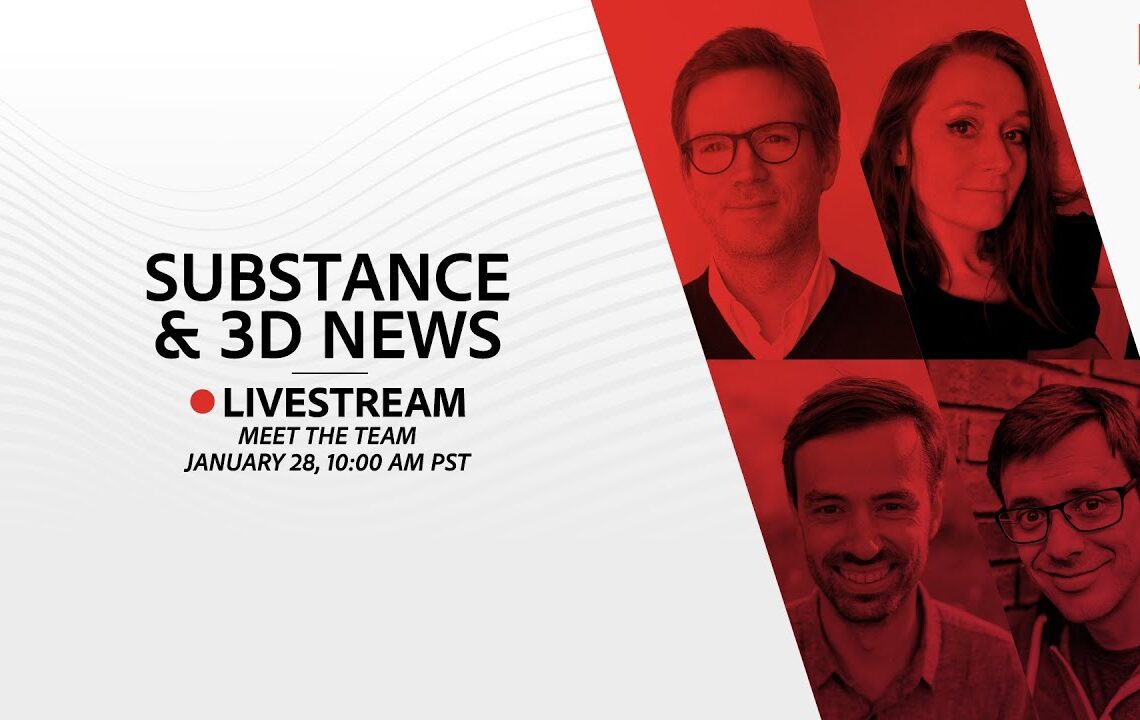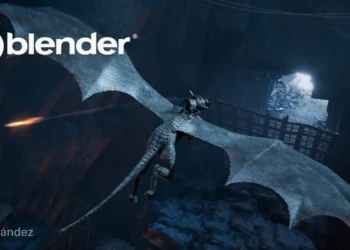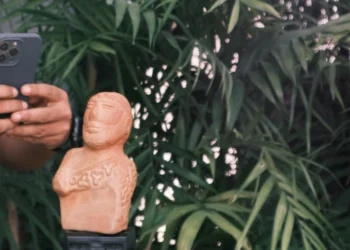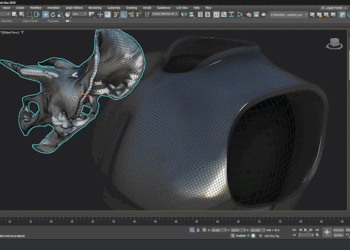Adobe has announced several updates to its Substance product line, including several interesting sneak peeks at R&D for future releases.
To help bring Substance Designer into the design space, the latest version adds support for Pantone spot colours and makes them accessible directly in the program. The Substance Automation toolkit will also be updated soon to include Pantone support. Among other things, this will allow designers to easily create 100s of colour variations of their products automatically.
Other features include the ability to disable selected nodes using a keyboard shortcut plus the ability to export a tessellated mesh as geometry. The demo for this feature shows a building component being exported to Blender where it is cloned to make an entire facade. You can find out more about Substance Designer’s new features in this blog post.
Substance Painter gains the ability to hide geometry masks and copy/paste effects. UDIMs also see an update with the ability to add descriptions to UV sets as well as improved thumbnail previews for fill layers. There are also new tool presets for adding stitch effects as well as updates to iRay and improved Python documentation. Find out more, including videos in the release blog.
Perhaps the most interesting part of the announcement is a peek at some of the R&D that the Adobe and Substance team are working on. Several of these have been seen before at Adobe Max, but they’re worth collating here. First up was PhysicsWhiz which allows users to lay our scenes using physics to deal with collisions. Secondly, Scantastic, allows user to create 3D assets by scanning with their smartphones. There’s work going on to add true IBL Shadows to the Substance app viewports, and a rather snappily named technology called Differentiable Material Graphs for Procedural Material Capture. In a nutshell, this allows users to take a single image and have a parametric Substance texture created that very closely matches the photo. Finally, it would appear that Adobe has its eye on the procedural modelling market. The livestream featured a demo of Substance being used for Parametric Modeling including the creation of a sofa, grass, and some fantasy towers made by procedurally manipulating a handfully of basic imported 3d assets.
Watch the livestream in full on YouTube.







